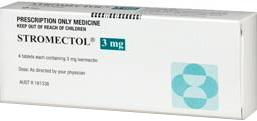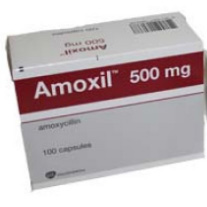Medication Overview
Stromectol contains the active ingredient ivermectin, a broad-spectrum antiparasitic agent. It is commonly used to treat infections caused by certain parasites, including roundworms and insect larvae. The medication impairs the activity of the parasites, leading to their paralysis and eventual death. It is administered orally and is generally used in a single-dose regimen, depending on the specific infection being treated. The effectiveness derives from ivermectin’s ability to enhance the release of neurotransmitters in parasites, affecting their muscular and nervous systems.
Pharmacodynamics
Stromectol acts by binding to glutamate-gated chloride ion channels, which occur in invertebrate nerve and muscle cells. This binding increases the permeability of the cell membrane to chloride ions, resulting in hyperpolarization and paralysis of the parasite. The therapeutic effects are specific because most mammals, including humans, do not have the target glutamate receptors, leading to minimal effects on human cells at approved doses. However, the action of ivermectin is limited to invertebrates, leaving mammalian cells largely unaffected.
Pharmacokinetics
After oral administration, Stromectol is absorbed and reaches peak plasma concentration within approximately 4 hours. The bioavailability of ivermectin is affected by the presence of fatty meals, which enhance its absorption. The drug is extensively metabolized in the liver, mainly by cytochrome P450 enzymes. The half-life of ivermectin is usually around 12 to 18 hours in humans, allowing the drug to clear from the body within a few days post-therapy. Excretion primarily occurs via feces with minimal renal elimination.
Indications for Use
Stromectol is indicated for the treatment of several parasitic infections, such as onchocerciasis, which is caused by the Onchocerca volvulus worm, and strongyloidiasis due to Strongyloides stercoralis. It is also effective in controlling other parasitic diseases including lymphatic filariasis and certain types of scabies and lice when alternative treatments are inadequate. The specific indication depends on the region’s endemic parasites and resistance patterns. It is crucial to follow local guidelines on the use of Stromectol for these conditions for optimal results.
Administration Guidelines
The administration of Stromectol should adhere strictly to prescribed doses, as deviations can affect the efficiency of the treatment or increase the possibility of side effects. It is typically administered on an empty stomach with water, which improves the absorption rate. The dosage may vary based on the patient’s weight and the severity of the parasitic infection. Repeated dosing can be employed for certain infections if recommended by healthcare professionals, especially in cases of heavy parasite load or persistence of symptoms.
Potential Drug Interactions
Stromectol may interact with various medications, altering the effectiveness or increasing the potential for adverse reactions. Co-administration with warfarin may affect anticoagulant activity. It is crucial to inform healthcare providers of all current medications to reduce the risk of interactions. Caution should also be exercised when administered alongside drugs affecting the P-glycoprotein transport system. Furthermore, interactions with certain anticonvulsants or immunosuppressants can alter ivermectin plasma concentrations.
Patient Monitoring
Monitoring of patients receiving Stromectol involves assessing the resolution of symptoms and potential side effects. Regular follow-up is necessary for patients with severe infections to determine the success of the therapy and decide if additional treatment is needed. Blood tests might be required in prolonged treatments to check the liver function and hematological profiles. Follow-up examinations should ensure that parasitic infections are effectively cleared, aided by clinical and laboratory assessments.
Adverse Effects
Stromectol is generally well-tolerated, but some patients might experience side effects. Common adverse effects include dizziness, gastrointestinal disturbances such as nausea or diarrhea, and transient skin reactions, especially in treating severe parasitic infections. Central nervous system effects, although rare, may occur, leading to drowsiness and confusion. Importantly, macrocyclic lactone-produced allergic reactions to dying parasites can manifest, necessitating additional symptomatic treatments.
Special Populations
Usage considerations for Stromectol are important in children, the elderly, and pregnant or lactating individuals. In children, particularly those under five years or weighing less than 15 kilograms, appropriate dosage calculations and indications must be stringently followed. Caution is advised in elderly patients due to the increased likelihood of hepatic impairment. During pregnancy, benefits must be weighed against potential risks, and in lactation, consideration must be given to the excretion of small amounts of the drug in breast milk.
Storage Instructions
Stromectol should be stored at controlled room temperature, away from moisture and light. Keeping the medication in its original packaging until use protects it from environmental exposure. Proper storage ensures the medication retains its efficacy throughout its shelf life, which is typically several years. Avoid storing in bathrooms or areas of high humidity, as this can degrade the medication. Safeguard the drug out of reach from children and pets.
Clinical Trials and Studies
Numerous clinical trials evaluating Stromectol’s efficacy have been conducted across diverse parasitic conditions. Studies show significant success rates in treating onchocerciasis and strongyloidiasis, with sustained parasitic clearance. Trials often explore optimal dosing, addressing various parasitic targets, and resistance development. Research continues to assess the breadth of ivermectin’s potential applications, including its role in global measures against endemic parasitic diseases.








Reviews
There are no reviews yet.